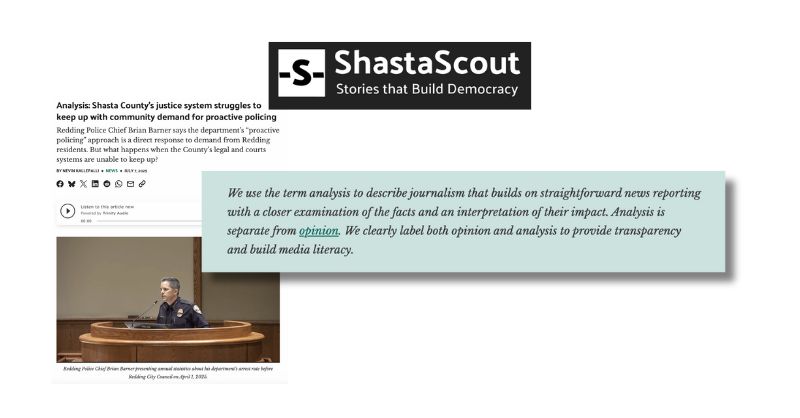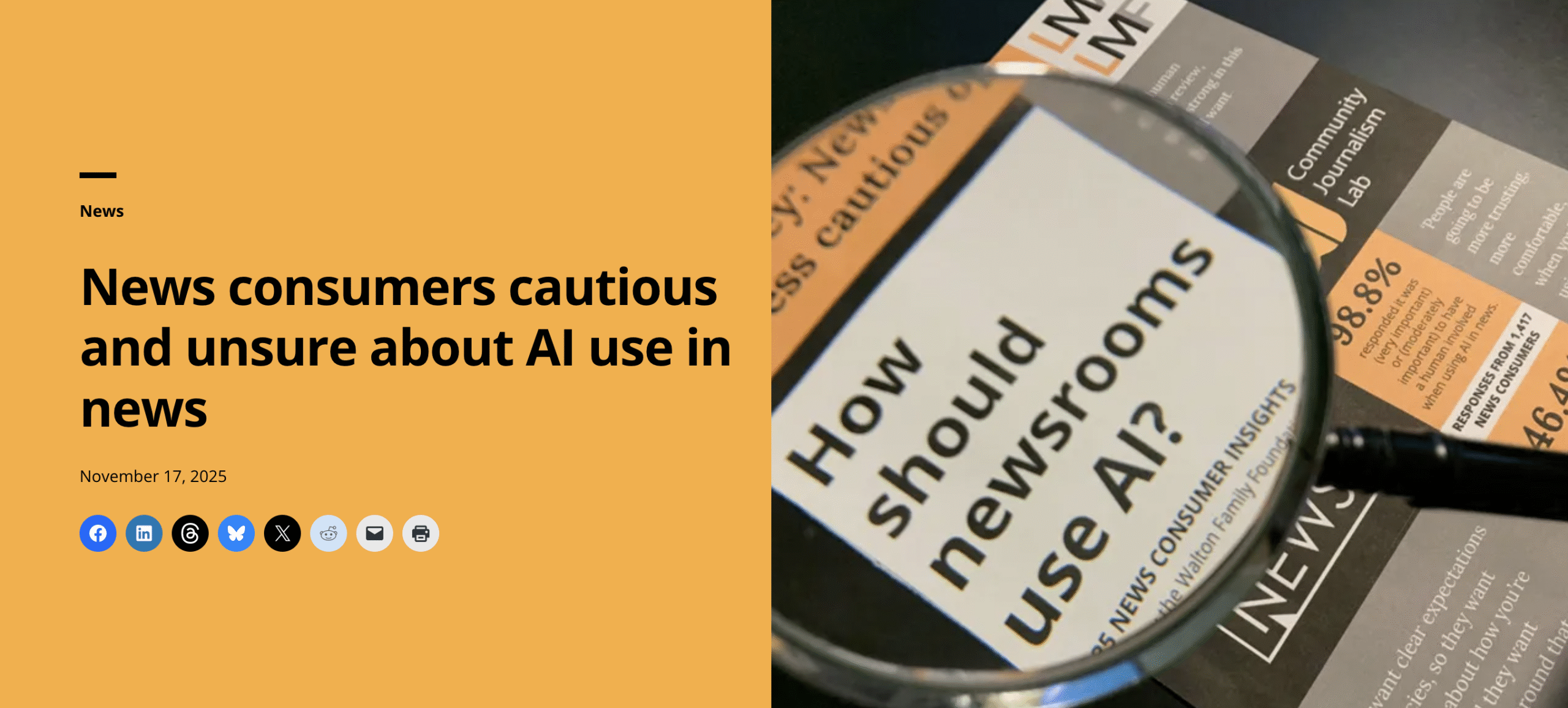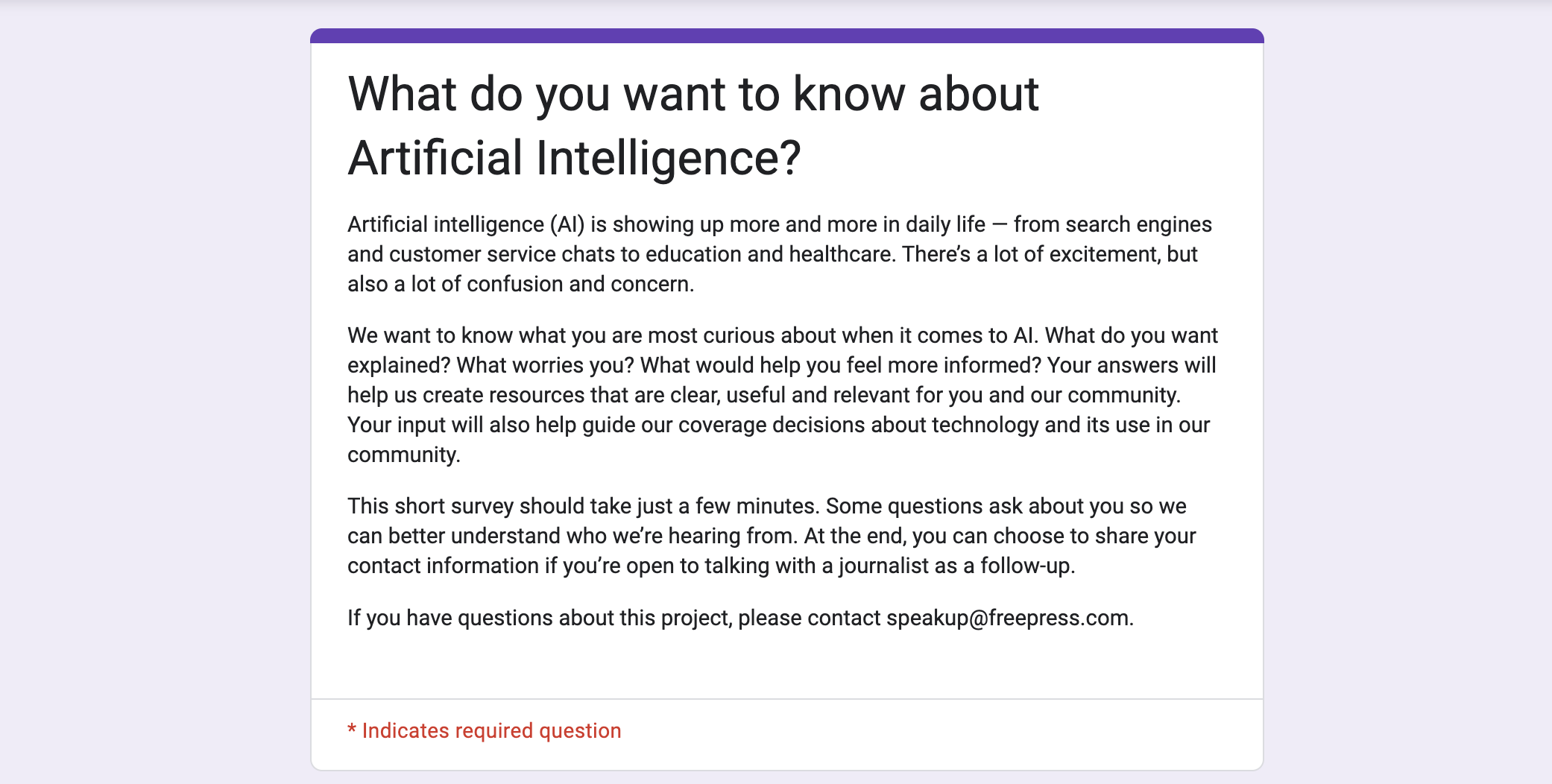
Yes, plug-ins may make it easier — but not having them shouldn’t stop you from working to build trust.
Don’t let your CMS be a hindrance to adding transparency
Transparency is a pillar of building trust in your news content. As a Trust Tips reader, you probably agree.
You’ve likely also heard us emphasize that transparency — around your mission and goals, reporting processes and how you work to be fair — has to be included in daily coverage to be the most effective.
We want to capture people’s attention when and where we have it. This means we want people to see transparency elements wherever they bump into your content.
We’ve previously shared ideas and guidance around how technology and customizing your CMS may be able to make this work easier. But we know many newsrooms can’t customize or make changes to their CMS, or don’t have newsroom product teams or tech support to help. If this is your newsroom, that’s OK! We want to encourage you to still do this work.
Below are three examples of how newsrooms have added transparency, without having extra features built into their CMS.
1. Create images to add transparency elements to daily stories
In these stories from 11Alive, reporter Andy Pierrotti (now at Atlanta News First) used Canva to create explainer cards, which added transparency about the reporting process by answering questions he anticipated viewers might have about his coverage.
In this series, Andy covered complicated subjects by connecting skeptics in the community with experts on the topic. The first Canva card image explained how Andy found the community member who is “the skeptical viewer” and the focus of the story.

The second card explained that Andy didn’t tell the viewer what questions to ask the experts. The viewer chose his own questions throughout the process. This is important because without the explanation, people might assume that Andy told him what to ask — which could make them distrust the entire story.

The third card gave more details about who the experts were. Providing this information helps users learn more about their background and why they were interviewed. It prevents people from guessing and making their own assumptions.

In addition to the cards, Andy included a well-written explanation of what “Drawing Conclusions” was about, adding the below text to the top of the story.

My favorite part of this explainer is this line: “Instead of elevating the conflict, the series seeks to better understand the skeptic’s beliefs.” This gets right to their goals and mission with the project.
2. Use headers to make transparency easier to consume
In this FAQ from the Caller-Times, users learn a lot about how the newsroom operates. It’s an older example but still one of my favorites because of the language used and types of basic questions the newsroom answered in the FAQ.

It’s also a great example of how you can turn a regular story page template into a helpful and easy-to-navigate transparency page, answering questions about your ethics, mission and decision-making. (More on creating an FAQ about your reporting is in this post.)
3. Highlight transparency with bold text and bulleted list
Another FAQ page that is a basic story page (a headline with copy) is this one from KPRC. It focuses specifically on how they report on crime, but you can see how by just using bold text and a bulleted list format, users are able to get answers to important questions all on one page.

They also share explanations about their decision-making in daily coverage too. You can see an example of that at the bottom of this story.
Trust and technology: Getting clear about AI
At Trusting News, we’re curious about the systems and tools journalists use to build trust. We’re asking the question: How can technology and news products help journalists build trust?
We want to help newsrooms explore and answer this question while developing best practices for the industry. We recently published a Trust and Transparency section on our website to help journalists explore the different ways technology and products can help build trust.
It includes:
- Our own policy around AI use
- Examples and guidance on how to create your own AI policy
- Ideas on how to use AI and other products to eliminate bias
At Trusting News, we learn how people decide what news to trust and turn that knowledge into actionable strategies for journalists. We train and empower journalists to take responsibility for demonstrating credibility and actively earning trust through transparency and engagement. Subscribe to our Trust Tips newsletter. Follow us on Twitter and Facebook. Read more about our work at TrustingNews.org.

Assistant director Lynn Walsh (she/her) is an Emmy award-winning journalist who has worked in investigative journalism at the national level and locally in California, Ohio, Texas and Florida. She is the former Ethics Chair for the Society of Professional Journalists and a past national president for the organization. Based in San Diego, Lynn is also an adjunct professor and freelance journalist. She can be reached at lynn@TrustingNews.org and on Twitter @lwalsh.



